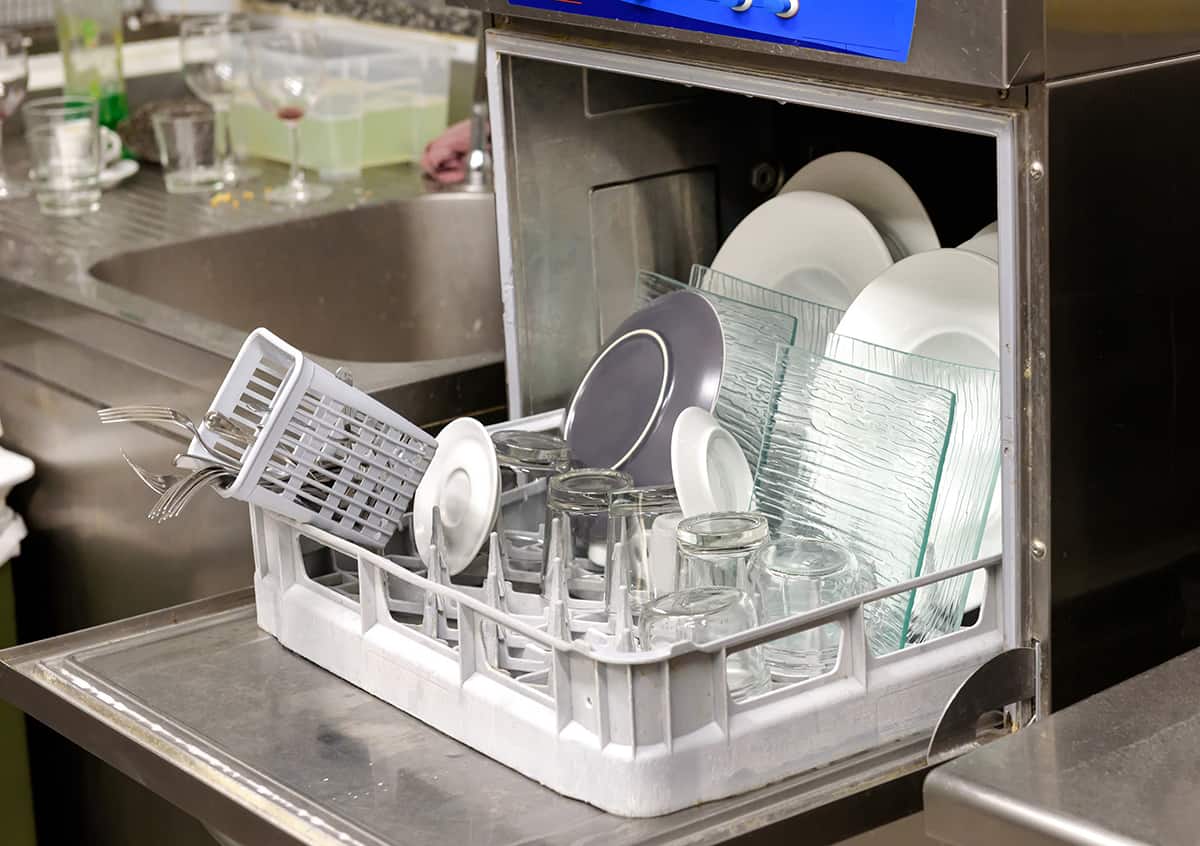KitchenAid dishwashers are known for two things—their high load capacities and their top-notch filtration systems. While KitchenAid prides itself in its products’ durability, there will come a time when its dishwashers may experience slight or even major technical issues. One such problem is when the dishwasher fills but doesn’t begin washing.
When a KitchenAid dishwasher fills but won’t commence the washing phase, the likeliest culprits are a faulty pressure switch, a faulty temperature regulator, and a faulty door switch. You may need to remove the malfunctioning component and replace it with a new unit.
In this guide, I’ll explain in detail the various causes for why a KitchenAid dishwasher won’t start after filling, how it can affect the dishwasher, and what to do in order to resolve the problem.
Why Does My KitchenAid Dishwasher Fill but Not Wash?
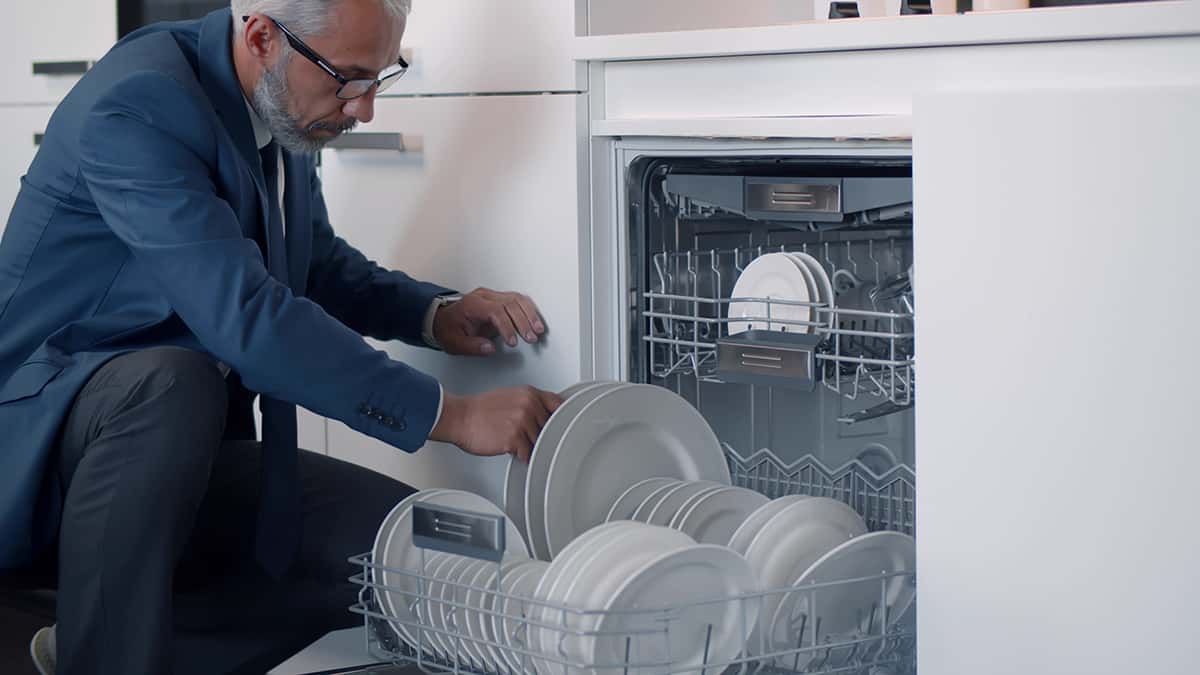
Dishwashers, even high-quality units sporting the KitchenAid logo, don’t last forever. In general, you can get around three good years of uninterrupted, flawless use from a dishwasher before it begins showing the first signs of wear and tear. Unfortunately, one of the more common problems to arise is a dishwasher that fills with water but doesn’t wash.
There are several possible causes for this. The first thing to look for is a faulty pressure switch. This component regulates the pressure at which water shoots out of the spraying arms. When the pressure switch is on the fritz, the jets of water might not be far enough to reach the undersides of your dishes.
Instead, the water will pour out of the spraying arms in a miserable, pathetic trickle before residing at the bottom of the dishwasher’s tub.
The second likeliest cause is a faulty temperature regulator. Modern dishwashers carefully measure and adjust the water’s temperature. It might come with a heating element that brings the water up to temperature or rely solely on your water heater. In either case, if the water doesn’t reach the optimal temperature, your dishwasher might be stuck in a perpetual loop of heating standing water.
The third cause, which also happens to be the easiest problem to resolve, is a faulty door switch. Dishwashers are designed to fill and commence washing when and only when the microswitch in the door latch is engaged. If, for whatever reason, the microswitch is disengaged, the dishwasher might fill with water but not commence to the next phase.
Essentially, it’s possible that your dishwasher can register optimal water levels even though there isn’t enough pressure. If there’s no pressure, the spray arms won’t distribute water evenly to every dish and utensil, leaving your dishes as dirty as they were the moment you first placed them on the dishracks.
How It Can Affect Your Dishwasher
In many cases, your dishwasher may turn off or switch to standby mode after refilling but not washing. However, in extreme cases, the dishwasher may attempt to continue with the wash and rinse cycles, despite suboptimal water distribution. When this happens, you can expect the following outcomes.
Unclean dishes
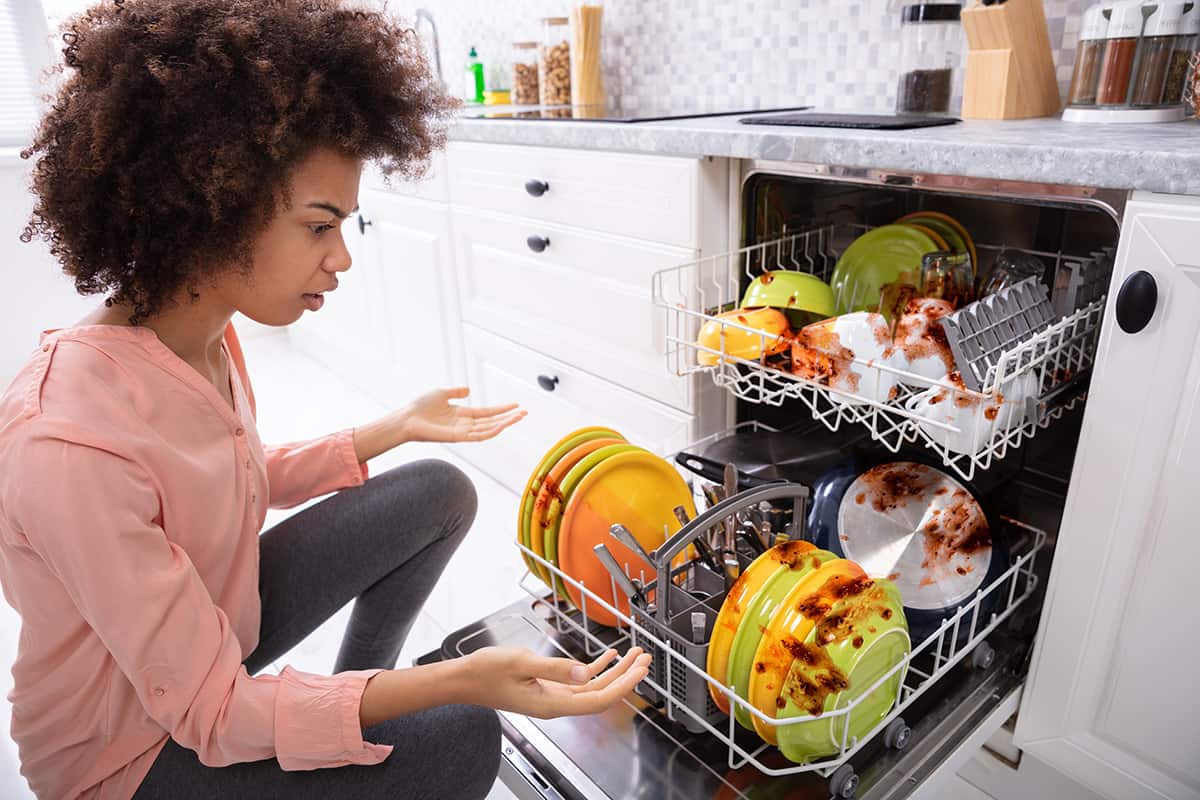
When the spray arms fail to shoot jets of water that reach your dishes, they have absolutely no hope of being thoroughly rinsed or washed. When this happens, your dishes may appear just as dirty as they were when you first put them inside the dishwasher.
Excessive strain on the motor
Even though your dishwasher hasn’t moved onto the next phase in the wash cycle, that doesn’t mean its internal components have shut down. Certain functions may have an auto-shutoff feature—e.g., the temperature regulator—but the spray arms may continue receiving water, regardless of how little pressure there is.
Standing water
Standing water is water that resides at the bottom of the dishwasher’s tub and doesn’t go anywhere. While the draining function is unrelated to pressure and temperature regulation, it will not commence until the end of the wash and rinsing cycles—both of which will never happen since the dishwasher isn’t receiving water at the correct volume, pressure, or temperature.
Wasting detergent and rinse aid
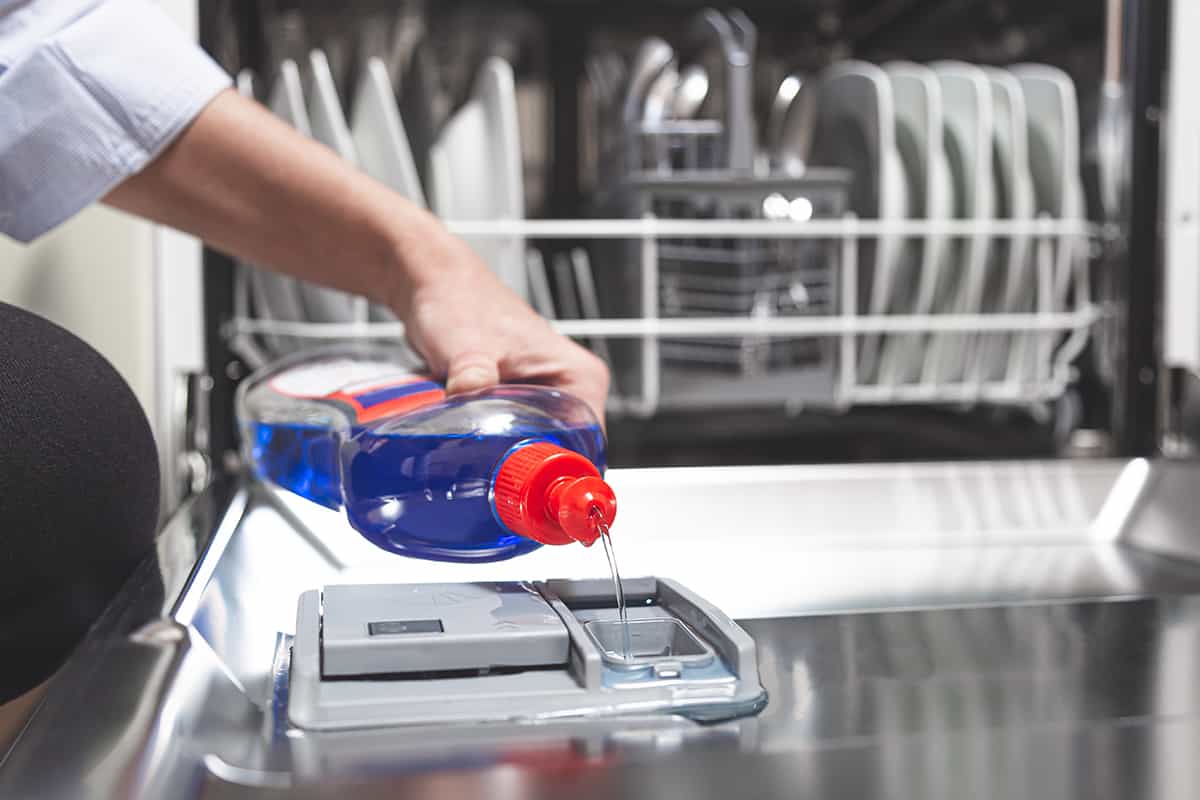
In some cases, only a trickle of water will pass and makes its way into the dishwasher, even though it appears that nothing is coming out of the spray arms.
When this happens, the water will pass through the detergent or rinse aid dispensers, which will then pour toward the bottom of the tub and sit there until the machine is manually drained.
Troubleshooting the Problem
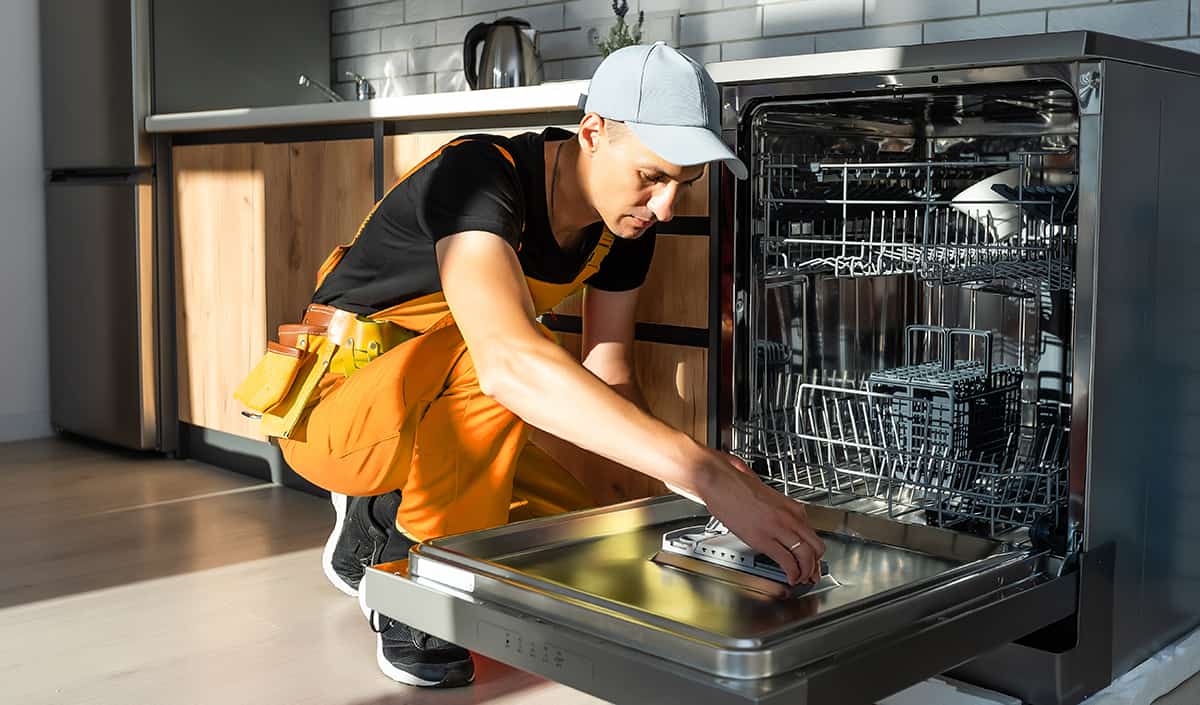
Thankfully, for every dishwasher problem you can imagine, there’s a way to fix it. I’ll explain the steps that you should follow when inspecting your dishwasher for a faulty pressure switch, a faulty temperature regulator, or a faulty door switch.
Resolving a Faulty Pressure Switch
The first component to look for when your dishwasher doesn’t start washing is a faulty pressure switch. Before determining that the regulator needs to be decommissioned and replaced, check to make sure that you can adjust the pressure.
- Disconnect the water supply valve and unplug your dishwasher. You might have to switch off the circuit breaker if your dishwasher is hardwired.
- Remove the access panel from the back of the dishwasher. This will give you to the unit’s internal workings.
- Look for the water heater. It should look like a large box connected to a tube.
- Locate the pressure switch on the water heater. It should look like a round pipe that connects directly to the heating tube that resides at the bottom of the dishwasher’s tub.
- Use a flathead screwdriver to turn the adjustment screw. Turning it to the right (clockwise) will reduce pressure, while turning it to the left (counterclockwise) will allow more pressurized water through.
- Reassemble the dishwasher and give it a spin. If this doesn’t solve the problem, the pressure switch needs to be completely removed and replaced.
Resolving a Faulty Temperature Regulator
If the water isn’t hot enough, the dishwasher may fill up but won’t move on to the following washing phases. Assuming there is enough water pressure, you can bypass the dishwasher’s water-heating steps by increasing the temperature setting of your home’s water heater.
However, if you want to fix the problem at the source, you might need to take a look at the temperature regulator. What you should do is remove the temperature regulator from the dishwasher by removing the back access panel and checking it for continuity using a multimeter. If it doesn’t register continuity, you will have to replace the temperature regulator completely.
Another dishwasher component you should inspect is the temperature sensor. If it’s defective, it might register cold water as hot (and vice versa), forcing it into a perpetual loop of reheating water.
Resolving a Faulty Door Switch
If your dishwasher doesn’t register that its door is shut, it may stop what it’s doing and switch to standby mode. The more severe the damage to the door switch, the likelier your dishwasher won’t start.
I’ve spoken in length about how you can fix a dishwasher’s door in my article on How to Fix an Amana Dishwasher Door Latch. You’ll find all the information you need to inspect the entire locking mechanism. The same steps for fixing an Amana dishwasher door latch can also apply to a KitchenAid dishwasher.
Basically, what you need to do is inspect the locking mechanism and make sure that all the turning parts are in working order. If there’s debris trapped in the door latch, you will have to manually remove it with a long, narrow object. If all else fails, you will have to pick up and install a replacement door switch for your dishwasher.
